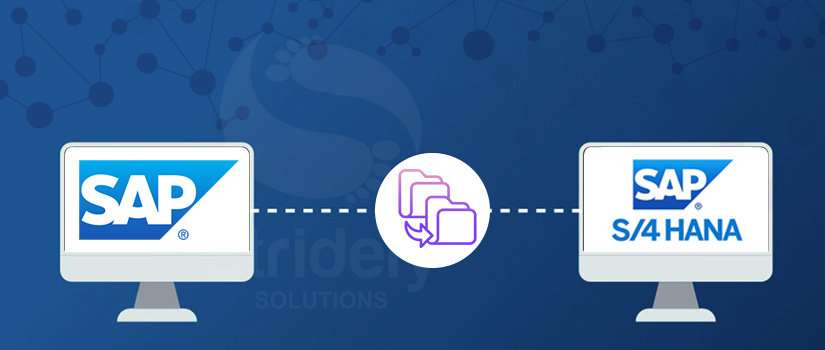The fact that you are here and reading this piece of article, it’s pretty obvious that you are currently operating your business on the SAP ERP system and also that you are aware of the decision laid by SAP to withdraw its support from all the legacy software. True, right?
So, yes. SAP is about to retract its basic system and it is due for the year 2025. Now, this might seem like you have plenty of time before actually migrating to SAP S/4 HANA, but in reality, the faster you do it, the better it is for you, your team and your business.
Migrating to a whole new infrastructure will not only cost you money but also encompass a range of transition which is tough to implement in a single go. You need to have a strategy in place before actually making the move, not to mention the need to train your employees and acquit resources.
Now, waiting for the final day might be easy but once again, it is better that you do it now, or, just today itself.
Wondering why?
There could be an array of reasons why, for now, we stick to the top three reasons that convince you to stop procrastinating and start acting
Reasons Why Should You Move To SAP S/4 HANA
-
A fully mature system:
We have had our time training novice employees so that they can gain experience and maturity to execute operations effectively. Also, every time you add a new product or install new software within your organization, you would need to educate your staff to use it properly. You might have done a similar thing back when you shifted your siloed infrastructure to SAP legacy system. So, migrating again to SAP S/4 HANA might seem an overhead.But it isn’t. To everyone’s surprise, SAP S/4 HANA is a fully integrated and mature system that can gel well with all adept in using SAP. It has a repository of best practices that will help all in your organization to operate the system without having the need to seek expert support and guidance.
-
Stay A Step Ahead:
When you were first told that SAP is about to discontinue it supports to ERP system, you would have been tensed as to what next. Then came the solution, the option to migrate to SAP S/4 HANA and once you heard that this action is due in 2025, you decided to delay the move and wait. Now, this is the case with the majority of the companies. Imagine that there are thousands of companies waiting to migrate their system. Eventually, the total number of experts that can help and guide organizations on the migration is limited and if everybody waits for the last day, finding support would not be difficult, but impossible.Since everyone around the corner of the world is delaying the shift, it is possible that there would be a mess created when all get to implement the same and odds suggest that when this happens, there will surely be bottlenecks and gaps in the availability of support partners.So, why wait for such a situation when you can peacefully shift your system today.
-
It Doesn’t Replace But Augment:
Many of you might be worried about the fact that once you shift your system, you would no longer be able to use your existing ERP solution. However, this isn’t true. SAP S/4 HANA comes with the much-needed flexibility giving it’s users the ease to continue using their old school ERP solution while the system successfully runs on SAP S/4 HANA. As a matter of fact, the SAP Human Capital Management (HCM) module which is yet to be incorporated in the SAP S/4 HANA can easily be incorporated and used by the HR professionals.
Making The Call
And the list doesn’t end there. The modernization features, the ease to use and the simplicity of the new SAP model add to the reason why moving to SAP S/4 HANA is needed and why should you do it now.
Still doubtful?
Picture it this way- Today the SAP S/4 HANA is a pretty new concept and raw, at large. Fast forward five years in 2025, the technology would be old enough for some but new for you. Even though it would be different for your organizational staff, the solution might turn old school for most of the organizations giving them leverage over you. They could have, by then deployed newer solutions driving their business five years forward than yours.
Why stay in the backfoot when you can wistfully migrate to the system and keep up with the ever-evolving business trends.
Think about it and make the move. One-step and you can best thousands of others in the race!


